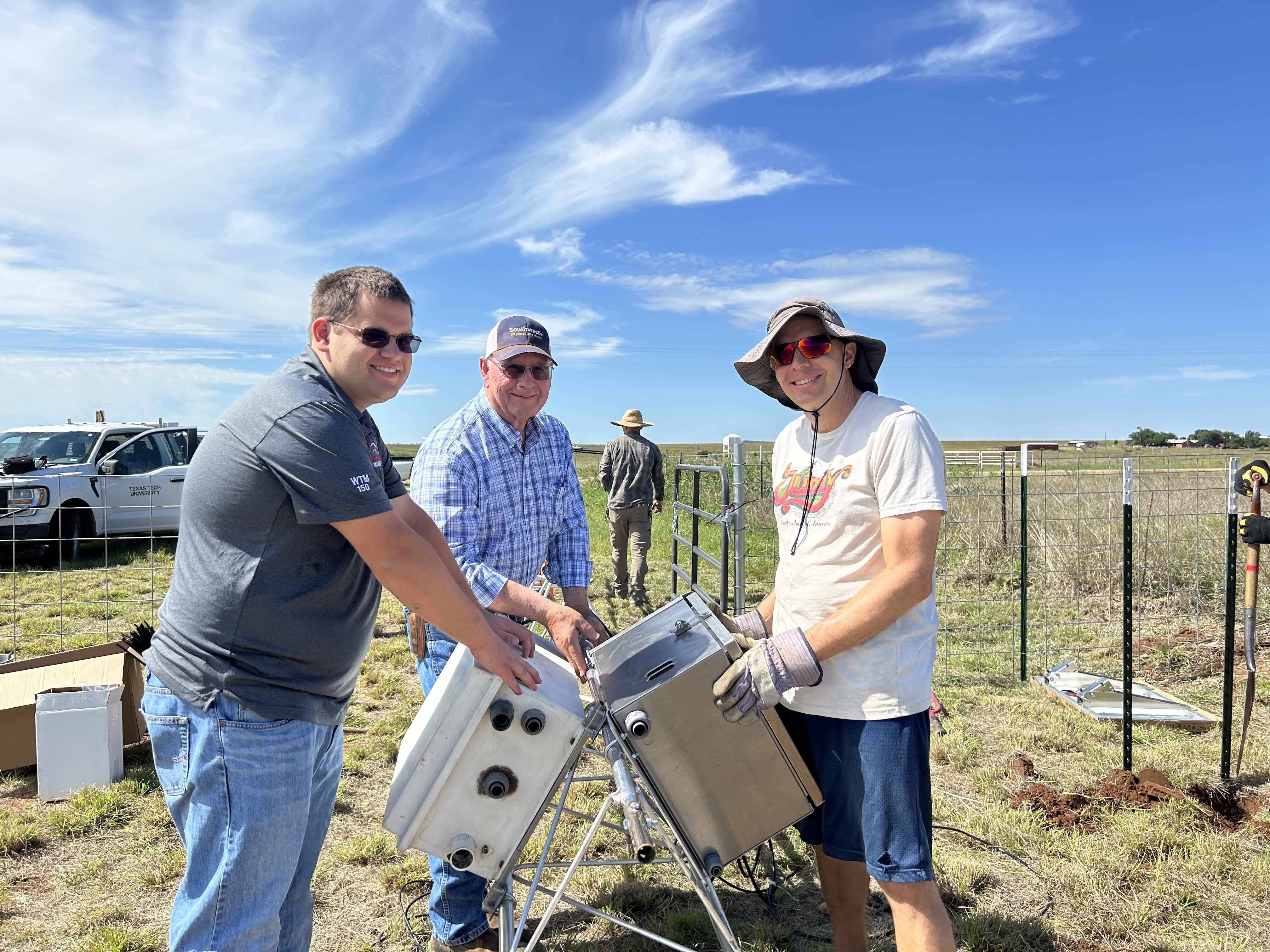The West Texas Mesonet celebrates its 24th anniversary with the addition of the 158th station.


This past Friday, May 17th, the West Texas Mesonet welcomed the addition of the 158th station in Flomot, TX. The addition marked a special anniversary for the members of the mesonet team, the National Wind Institute, and citizens of West Texas. Exactly 24 years prior (May 17th, 2000), the first site was brought to life in Lubbock at Reese Technology Center.
The original funding was for 28 meteorological sites within Lubbock and the surrounding counties. By 2010, the mesonet had doubled in size with over 60 sites. The 100th Station was welcomed in 2016 (New Home, Lynn Co.), while the 150th station came online in 2023 (Lubbock Christian University, Lubbock Co.).
See mesonet sites over the 24 years:
With the continued expansion, the West Texas Mesonet is the largest university-owned network in the country.

The mesonet team and volunteers building the Flomot station.
Maintenance for a network this large is a big consideration; if the network isn’t maintained, it isn’t doing anyone any good. The WTM proudly partners with several National Weather Service offices, universities, local emergency management, and private companies to help with both a station’s start-up cost as well as the continuous upkeep.
Each site consists of a 10 m tall tower, wind measurements at three heights, temperature at three heights, a rain gauge, a pressor sensor, a measurement of incoming solar radiation, five soil temperature measurements (for bare and naturally covered soil), four soil moisture measurements, and the ability to measure leaf wetness. Each of the 158 stations is self-sustaining (via solar panels and batteries) and communicates via cell service.

Team connecting the communication and battery boxes at the Flomot station.
Real-time data is freely available to the public via the website (West Texas Mesonet Homepage) as well as the West Texas Mesonet mobile (Apple and Android) applications. The mesonet is also well known for its activity on social media, where the team shares interesting meteorological findings, summaries of high-end weather events, and many pictures of wildlife located when visiting stations.






